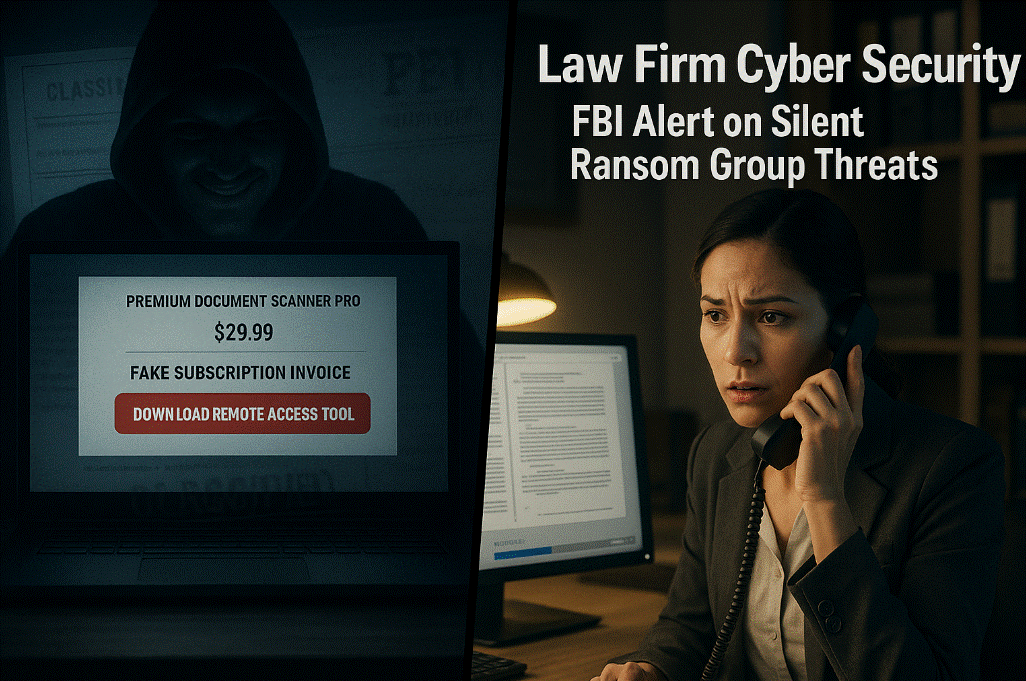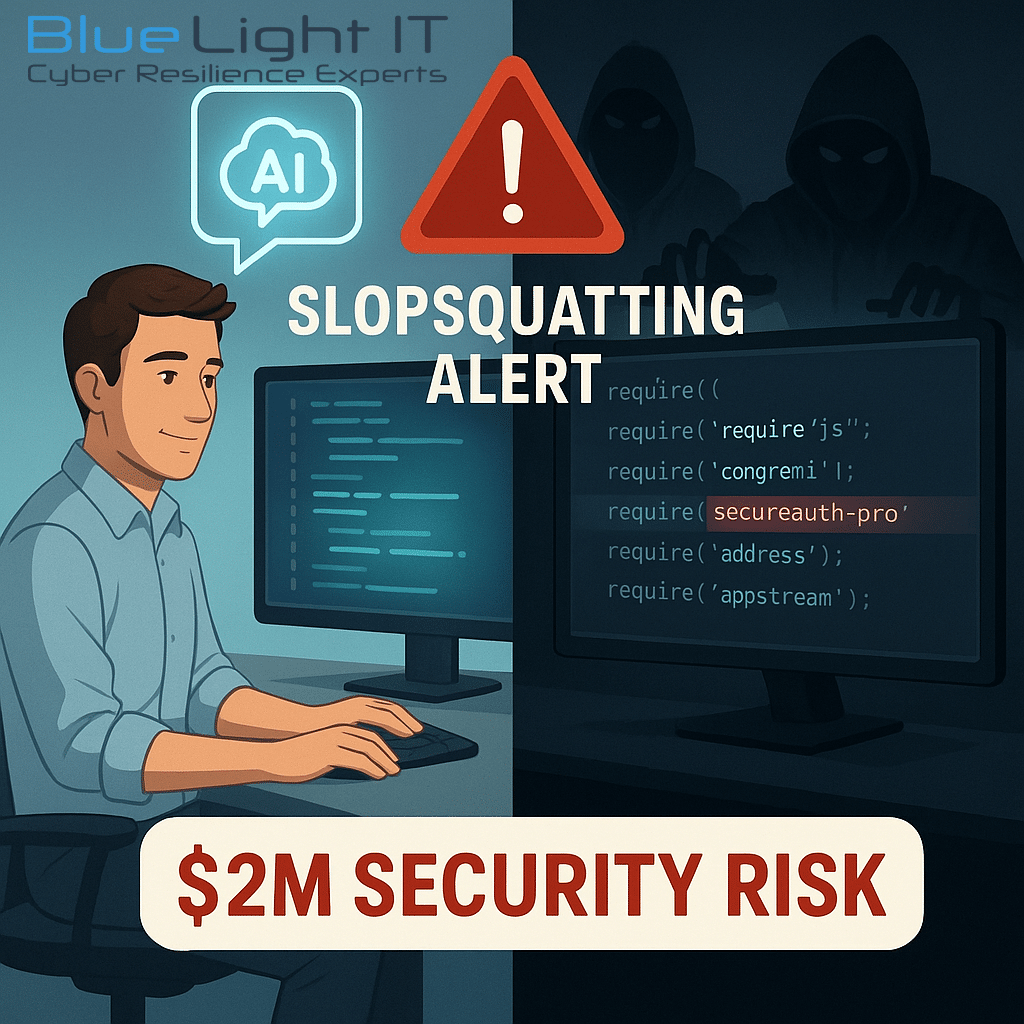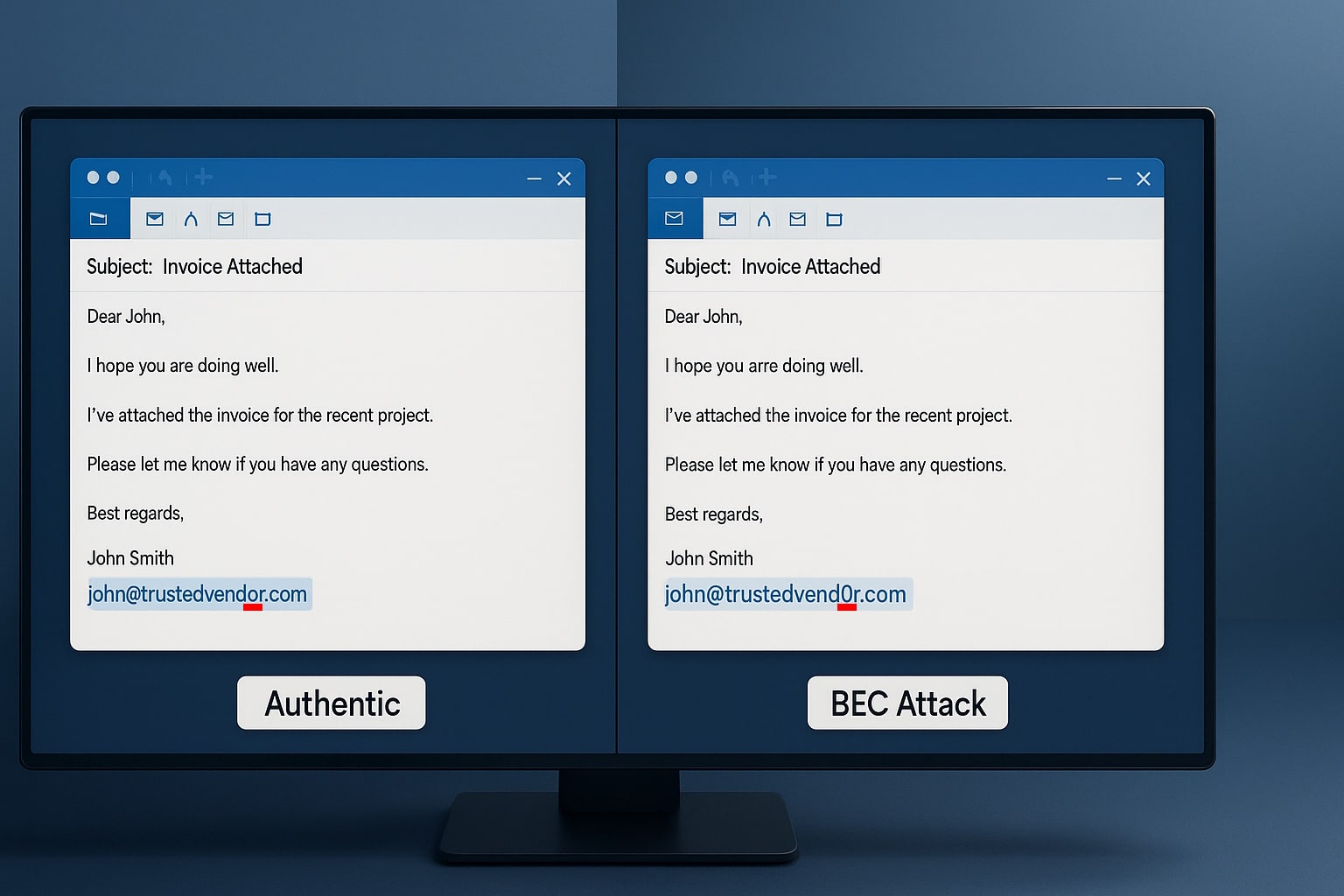Cybercrime has become a significant concern for individuals and businesses alike. With the ever-evolving techniques employed by malicious actors, it’s crucial to stay vigilant and informed about potential threats such as phishing attacks.
We’ll explore the dangers posed by phishing scams and provide valuable tips to help you protect yourself from falling victim to these deceptive tactics. By arming yourself with knowledge and adopting proactive cybersecurity measures, your business can navigate the online landscape with confidence and avoid becoming another statistic.
Cybersecurity is not a luxury, it’s a necessity. Don’t let hackers compromise your business and data. Learn below how Blue Light can offer your business robust cybersecurity services in Boca Raton. We’ll help you protect your assets, reputation, and future.
Want to Keep Your Business Protected?
What is Phishing and Why is it Common and Dangerous
Phishing is a common and dangerous cybercrime that involves attempts by hackers to deceive individuals into sharing sensitive information such as passwords, credit card numbers, or Social Security numbers. These attackers typically disguise themselves as trustworthy entities like banks, government agencies, or well-known companies through email or text messages. They use various tactics to manipulate victims into clicking on malicious links or opening infected attachments.
One reason why phishing is so prevalent in today’s digital landscape is its effectiveness. Cybercriminals are constantly evolving their methods and techniques to make their scams more convincing and realistic. They often employ sophisticated social engineering tactics that exploit human psychology, preying upon emotions like fear or urgency to prompt swift action from victims.
Phishing attacks can have devastating consequences for both individuals and businesses. Falling victim to a phishing scam can result in financial losses due to stolen money or identity theft. Additionally, organizations may suffer reputational damage if they inadvertently become associated with fraudulent activities carried out using their name.
Given these risks, it’s essential for everyone – from individual internet users to large corporations – to be aware of the dangers posed by phishing attacks and take proactive measures to protect themselves against this type of cybercrime.
How to Recognize Phishing Attempts
Understanding the different types and signs of phishing emails and messages is crucial to ensuring your cybersecurity. One common type of phishing is known as “spear-phishing,” where attackers personalize their messages based on information they have gathered about their target. By pretending to be a trusted source or an authoritative figure, these emails often trick victims into clicking on malicious links or downloading malware.
Another type of phishing, known as “vishing,” involves phone calls or voice messages rather than email communication. Scammers will typically impersonate legitimate organizations or government agencies to gather sensitive information over the phone. These scams often exploit fear tactics to create urgency, such as threatening legal action if immediate action isn’t taken.
Recognizing the signs of phishing attempts is essential in protecting yourself from falling victim to these schemes. Common red flags include spelling and grammatical errors, generic greetings instead of personalized ones, unexpected requests for personal information or money transfers, suspicious email addresses or domains that differ slightly from legitimate ones, and urgent demands for immediate action. It’s important always to verify the sender’s credibility by contacting them directly using official contact details rather than relying solely on the provided message.
The Best Practices to Prevent and Block Phishing Attacks
Phishing scams have become increasingly sophisticated, making it essential for individuals and businesses to be proactive in preventing and blocking these attacks. One of the best practices to avoid phishing scams is to always double-check the legitimacy of emails and websites before sharing any sensitive information. Pay close attention to email addresses, look for spelling or grammatical errors, and avoid clicking on suspicious links.
Another effective measure is implementing robust security technologies that can help detect and block phishing attempts. Advanced email filtering systems can analyze incoming messages for known phishing signatures and automatically divert suspicious emails to a separate folder or quarantine area. Web browsers equipped with anti-phishing features can warn users about potentially harmful websites.
It’s also crucial to keep all software up-to-date, including operating systems, antivirus programs, web browsers, and plugins. Software updates often include important security patches that can protect against vulnerabilities commonly exploited by phishing attackers. Regularly educating yourself on the latest phishing techniques and staying informed about new cybersecurity threats will further enhance your ability to spot potential scams before they harm you or your organization.
Want to Keep Your Business Protected?
Responding to Phishing Incidents
1. Identify the Phishing Attempt: The first step in responding to a phishing incident is recognizing it for what it is. Look out for suspicious emails, messages, or websites that ask for personal or financial information. Pay attention to the sender’s email address, grammar and spelling mistakes, urgent requests, and unfamiliar links.
2. Do Not Engage: It is essential not to interact with the phisher or provide any requested information. Avoid clicking on any links or downloading attachments within suspicious emails or messages as these may contain malware that can compromise your computer’s security.
3. Report the Incident: Take action by reporting the phishing attempt immediately. You can notify your organization’s IT department if you received a work-related phishing email or contact local law enforcement if you suspect criminal activity involved. Report it directly to relevant authorities such as your bank if the scam targeted financial accounts.
Reporting Phishing Attempts
1. Save Evidence: Preserve evidence of phishing attempts by taking screenshots of suspicious emails/messages before deleting them from your inbox.
2. Forward Suspicious Emails/Messages: In order to report the attempted attack effectively so authorities can investigate further, forward suspected phishing emails/messages directly without modifying their content (including headers). Send them either through dedicated email addresses provided by banks/credit card companies for this purpose or forward them manually using tools like Outlook.
3. Submit Reports Online: Most organizations have specific channels set up specifically for receiving reports about cybercrime incidents including scams such as phishing attacks. Visit websites of institutions affected (your bank/ credit card company) and look for guidance on how they want users/reporters handle compromising situations encountered online. These steps usually include filling up an online form with details/scans/screenshots gathered at earlier stages along with identification info related vs account number/email id/password excessive deck.
The Measures and to Restore and Secure Your Data
Recovering from phishing damage can be a challenging and daunting task, but with the right measures and support, you can restore and secure your data and devices. It’s essential to promptly report the phishing attack to the appropriate authorities, such as your IT department or local law enforcement agency. This will not only enable them to investigate the incident but also assist in preventing further attacks.
Next, ensure that you change all compromised passwords immediately. This includes not only your email and social media accounts but also any online banking or financial platforms that may have been targeted. Strong, unique passwords should be used for each account to prevent hackers from gaining access again.
It’s crucial to regularly update your antivirus software and run comprehensive scans on all of your devices. These scans can help detect any malware or malicious programs that might have been installed during the phishing attack. Consider enabling two-factor authentication (2FA) wherever possible. 2FA adds an extra layer of security by requiring a second form of verification before granting access.
Seek professional support if needed. If you are unsure about how to recover from a phishing attack or fully secure your devices and data, consult with cybersecurity experts who can provide guidance tailored to your specific situation. They can assist in implementing advanced security measures such as firewalls or intrusion detection systems that offer additional protection against future attacks.
Resources to Raise Awareness and Prevent Human Errors
One of the most impactful ways to raise awareness is through cybersecurity training sessions that outline the various types of cyber threats, including phishing attacks. These sessions can educate employees on how to identify suspicious emails or websites, recognize common red flags in electronic communications, and understand best practices for securely handling sensitive information.
Providing regular updates on evolving cyber threats can help keep staff informed about new tactics used by malicious actors. This could be done through newsletters or internal communication channels where you share information about recent phishing attempts or other cyber scams. Offering access to up-to-date resources such as articles, guides, videos, or interactive modules that cover topics related to cybersecurity can further enhance employee knowledge and empowerment.
Establishing a reporting system where employees feel comfortable reporting potential instances of phishing attempts is crucial in preventing human errors. Encouraging open communication and rewarding vigilance promotes a proactive culture when it comes to cybersecurity within the organization.
It may also be beneficial to conduct simulated phishing exercises periodically as part of your education program so that staff members have hands-on experience dealing with these threats in a controlled environment.
Want to Keep Your Business Protected?
We Can Help You with Your Cybersecurity Solutions
We understand the importance of safeguarding your sensitive information against cyber threats. Our cybersecurity team is dedicated to providing top-notch solutions that can effectively defend you and your business from phishing attacks and other malicious activities.
With our knowledge and industry experience, we have developed a range of tailored strategies to protect individuals and organizations against evolving cybercrime techniques.
Whether you are an individual looking to secure your personal online presence or a company seeking robust cybersecurity measures, we offer a suite of services designed to meet your specific needs. Our team will work closely with you to assess your vulnerabilities, develop customized security protocols, conduct regular risk assessments, provide employee training sessions, and implement advanced technologies for threat detection and prevention.
By partnering with us, you can rest assured knowing that your cybersecurity concerns are in capable hands. We keep ourselves updated on the latest trends in cybercrime so that we can continuously refine our tactics to stay one step ahead of potential attackers.
Don’t wait until it’s too late — contact us today for a consultation on how we can help fortify your defenses against cyber threats.
Related Posts

Law Firms Beware: The Silent Ransom Group is Calling
read more

Slopsquatting: The AI Security Threat Every Development Team Must Address
read more

